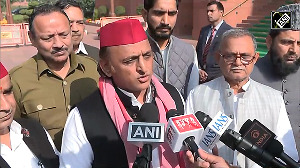China plans to launch up to 11 satellites over the next 14 months before it stages its second manned space mission in 2005, the Chinese state media reported today.
China, which sent a communications satellite into space early today, plans to launch a geospace exploration satellite in December, the president of China Aerospace Science and Technology Corporation, Zhang Qingwei, was quoted as saying by the China Daily.
The planned lift-offs, together with two others staged since China's first manned space flight on October 15, will bring the number of space launches in a month to a record high, Zhang said.
"The active space programme reflects our experience and expertise, especially our confidence in the quality and reliability of Chinese launch vehicles and spacecraft," said Zhang, whose company is the major manufacturer of China's four unmanned and one manned spacecraft and carrier rockets.
Upbeat about the upcoming launches, he noted that the Long March 3A rocket, which will send the communications satellite into orbit, has been successfully used in all seven launch missions.
Today's launch was the 74th by China's Long March carrier rockets since 1970, and the 32nd consecutive successful launch since October 1996, he said.
Zhang, who is also deputy chief commander of the country's manned space programme, said China will not conduct space flights in 2004, but confirmed that a second manned mission is scheduled for 2005.
Last month, China's first manned spacecraft, Shenzhou-V, carried an astronaut into space and returned to earth safely after circling the planet 14 times on a 21 hour mission. But Shenzhou-VI will spend five to seven days in space with more than one person aboard, he said.
After improving the quality of satellites and reliability of their launch vehicles over the past three decades, Chinese scientists have been able to substantially shorten the time interval between two launches, Zhang said.
In the past, when a satellite and a rocket were transported to a launch centre, ground scientists took up to two months to test the rocket and erect the assembled parts on the launching pad to be checked again.





